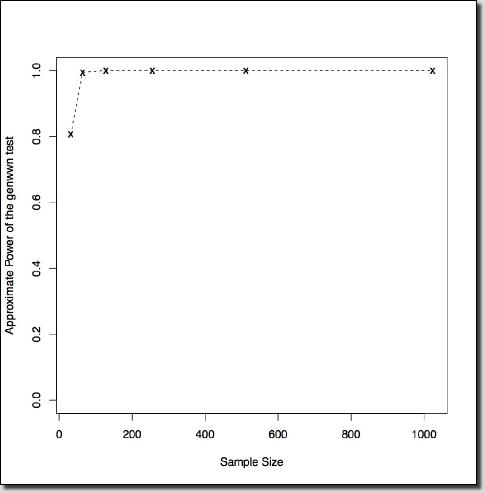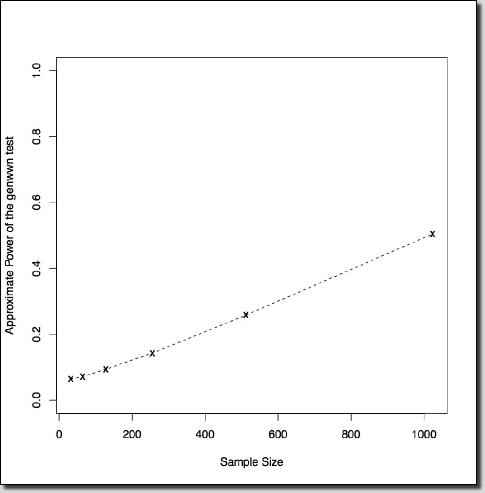The statistical power of the test?
For some specific alternative hypothesis: what is the power for my test of white noise?. A general theory for this power for an arbitrary alternative seems out of reach for most tests and software implementations non-existent (? if you know of any, please let me know).The hwwntest package contains genwwn.thpower that computes the approximate theoretical power for the package's general wavelet white noise test (genwwn.test) for (power of two) sample size for any ARMA process.
Plotting power versus sample size
The plot above shows the power of the genwwn.test against sample size for an AR(1) process with parameter α
=0.8 generated using the command
genwwn.powerplot(ar=0.8)
The crosses indicate for which sample sizes are actually calculated. The power is very high even for small sample sizes. The plot to the right was obtained by setting ar=0.1. Even for the large sample size of N=1024 the power is only 50%.
Why is this important?
You often see analyses where people are estimating small AR parameters with small sample sizes and this can be unrealistic. You often really do need a large sample size to detect and estimate small AR parameters.
|



